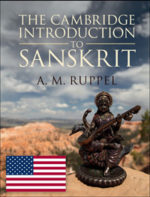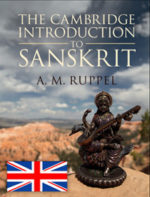The Cambridge Introduction To SanskritA.M.Ruppel
About
Sanskrit students today have a large variety of learning backgrounds and interests. The Cambridge Introduction to Sanskrit (CIS) was written to address this fact. It employs modern pedagogical methods and tools used successfully in textbooks for various other ancient languages.
It does not expect any prior knowledge of linguistics, language learning or languages other than English. Yet some understanding of language structures and language history makes the large amount of memorisation required of any Sanskrit student much easier; and thus the relevant background knowledge is provided whenever that is helpful.
Most ancient-language students aim for the ability to read texts written in that language. Yet ancient texts that survive the millennia often do so because they have been appreciated not just for their content, but also their style, their intricate artfulness, the beauty of their language. Almost all texts furthermore are composed for those who have mastered the language – and not for language students. We thus usually lack original ancient texts that are both simple enough for a beginning student to read and interesting enough that such a student actually would actually want to read them.
Ancient-language textbooks therefore often present students only with graded sentences and texts (re)written by their modern authors, aimed at consolidating newly introduced grammar. These are at the right level of difficulty, but may not be all too interesting. The CIS offers such sentences, but also includes a large number of original Sanskrit texts (from short excerpts to two complete chapters of the Bhagavadgītā), each annotated so as to perfectly fit the student’s knowledge at that specific point of the course. Thus the eventual goal is kept in focus and the learning process is made much more enjoyable.
The devanāgarī script is introduced right at the beginning but used in parallel with transliteration for a full seven chapters. That way, students can progress with their actual language knowledge while slowly mastering the new script. Being able to read Sanskrit in both devanāgarī and transliteration means students can read more or less all Sanskrit texts available in print, as well as vast numbers of manuscripts.
With the wide range of resources offered on this website, the CIS can be used not just in traditional classroom settings, but also in flipped classrooms and for self-study.


